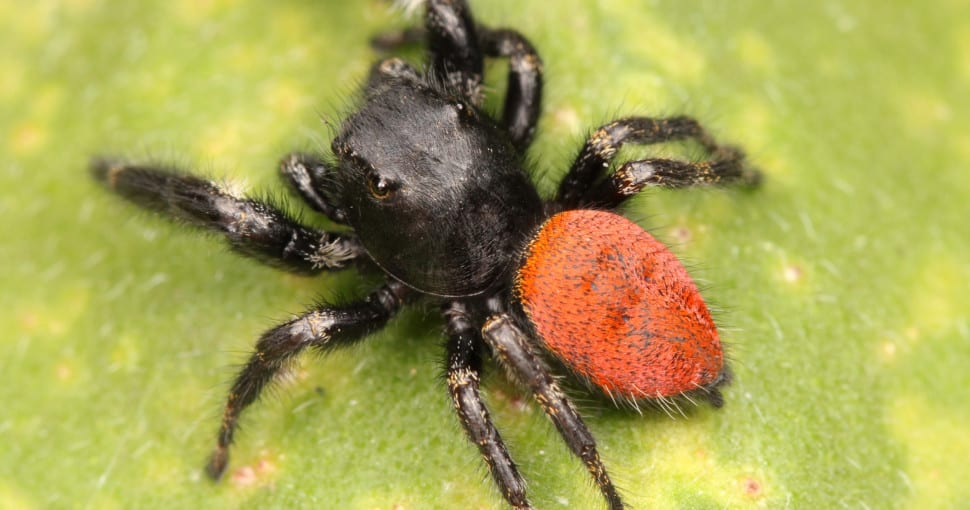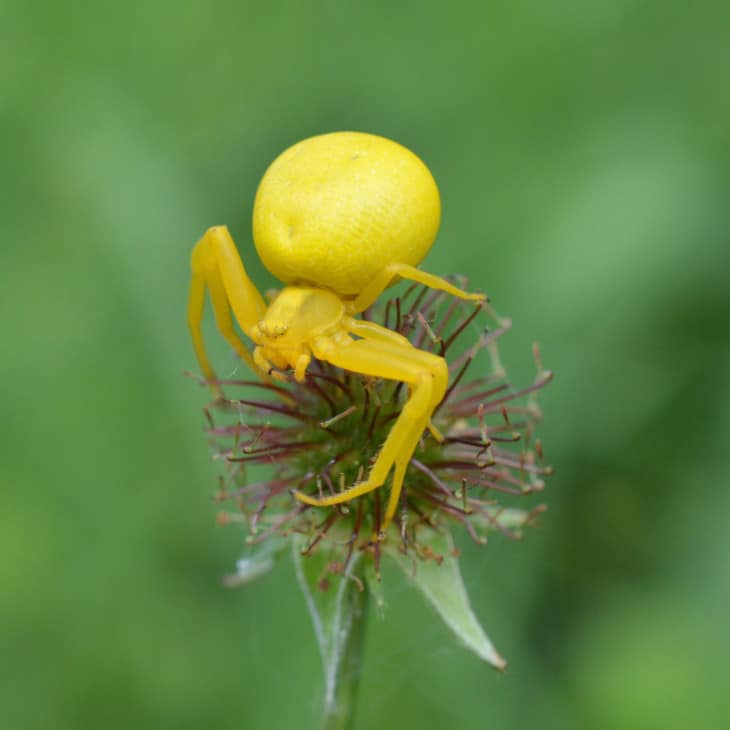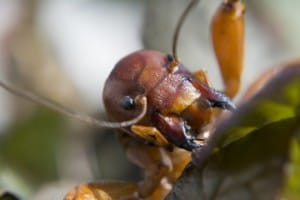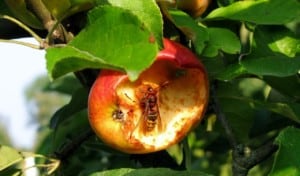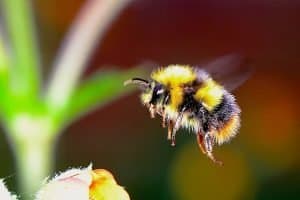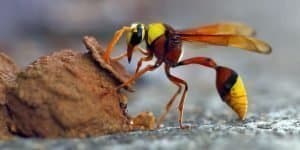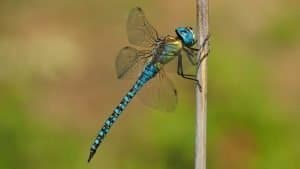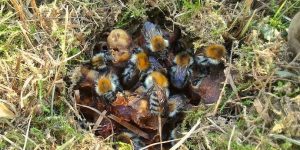Do you have garden spiders crawling around your garden? What are garden spiders, anyway, and how are they distinguishable from one another? There’s more to these inch-big arachnids than meets the eye, so let’s take a closer look at some of the more common types of garden spiders you’ll be likely to encounter.
Contents
What are Garden Spiders
You might think that all “garden spiders” are alike, but you would be wrong – in no small part due to the fact that this is hardly a scientific term. Instead, “garden spiders” is a colloquial catchall term that can be used to describe a wide range of arachnid species.
For example, some spiders on this list are active hunters, meaning they can stalk your garden searching for prey. Others tend to be more stationary, instead waiting for insects to come to them.
It is the latter group that is typically responsible for the largest and most ornate webs. If these are the ways by which you determine you have “garden spiders” in your garden, you’re probably dealing with a more stationary spider.
These spiders also vary in terms of their size, with many being incredibly small. That said, it is rare for “garden spiders” to grow to larger than an inch in size, though their legs can and often do add to that, often being larger than their bodies.
Finally, garden spiders enjoy quite a wide range of coloration. Some are dull and darkly-colored, while others can feature bright red or yellow coloration.
These are ten types of garden spiders commonly found in the continental USA.
1. Cross Orbweaver
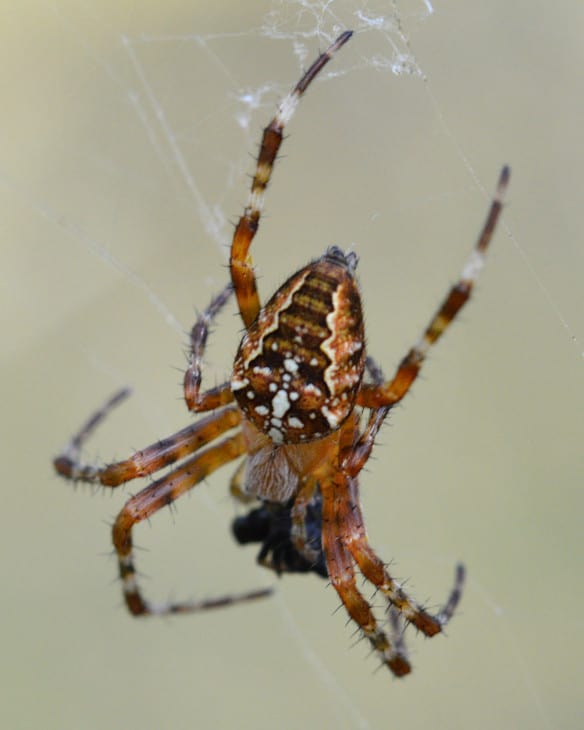
Araneus diadematus has an adult body size of between 3/8 and 5/8 in length, with its legs measuring around 1½ in. When it is pregnant with fertilized eggs, female abdomens may appear more swollen than usual, although females are still much larger than males on average.
As the name would imply, these spiders spin orb-shaped webs to catch flying insects. Once they have served their purpose, these webs are then often consumed by the spider before they spin a new one. Females spin webs once they’ve reached maturity, but males often do not.
Orbweavers can be identified by their reddish to medium-brown bodies with reddish-orange accents. They also have a darker pyramid shape on their abdomen and white dots and lines in the shape of a cross. These spiders are especially common in late summer to mid-September.
2. Grass Spider
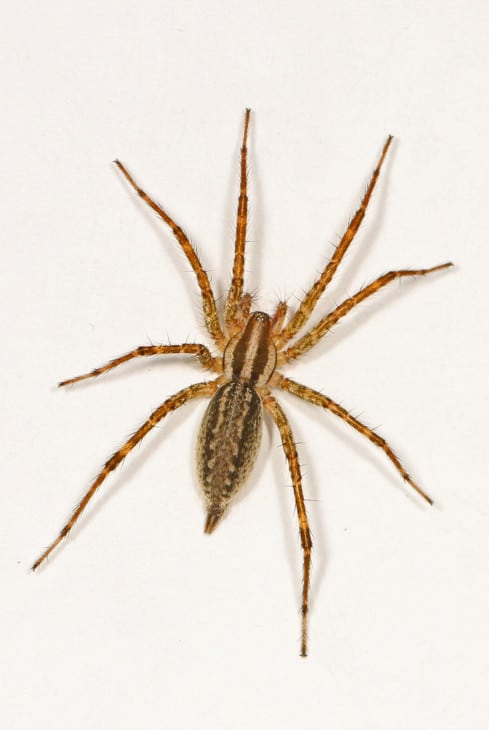
Agelenopsis has a body length of about 1/4 to 1/2 in., and with legs it has a total length of about an inch more than that, making it one of the smallest spiders on this list.
Grass spiders tend to build flat webs with funnel-shaped rears, allowing them to run out of the funnel area to snag prey before retreating back to the safety of the inner web, where they can consume their meal. True to their name, these webs are built in grassy low-vegetation areas.
These spiders are most common in late spring through early fall. They are usually brown with a light midline, and their cephalothorax has edge striping. Their abdomen tends to have concentric light patterns, and their abdomens have long spinnerets.
3. Hololena
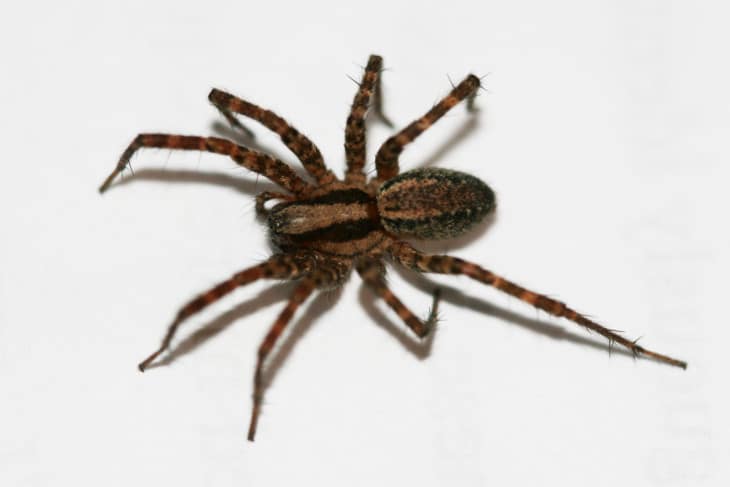
This is a species that is typically known by its scientific rather than any common name. It is another small garden spider, with its body measuring just 1/2 in. and the whole spider measuring just around an inch when its legs are included.
It tends to construct sheet webs in shrubs, with the webbing containing a circular retreat area where the spider can sit and wait for its prey. You may not see them while out gardening as they tend to be most active at night, though they hunt opportunistically during the day.
These spiders are quite common from summer throughout the early months of autumn. They are identifiable by their light brown to tan bodies, which also feature parallel dark stripes on their cephalothorax.
4. Goldenrod Crab Spider
The Misumena vatia is sexually dimorphic, with males (body length around 5/32 in.) being much smaller and thinner than females (3/8 in.). Females’ abdomens can swell when they are ready to lay their eggs.
This is another spider that waits and bides its time while searching for prey, often seeking out the cover of flowers and similar foliage. Claiming this territory means that they often have run-ins with and can hunt and eat flies and bees, paralyzing them once they land.
True to their name, goldenrod crab spiders are lightly colored, with females having a pair of red stripes on their abdomen. That said, these spiders can sometimes change their color to better blend in with the flower on which they are perched. They are common in early summer and fall.
5. Western Lynx Spider
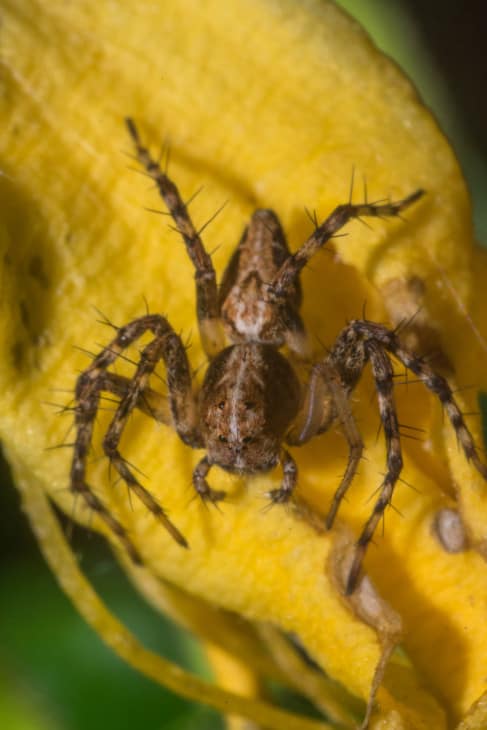
The Oxyopes scalaris is another tiny garden spider, measuring around 5/16 in. They are most common in spring and summer. In fact, these spiders can sometimes be found basking and relaxing in the sun.
These spiders are most active during the day, having the ability to both sit and wait for prey while also actively sometimes stalking and darting after them with quick aggressive movements.
In terms of coloration, the Western lynx spider tends to appear bronze-ish. Their legs have many spines, which gives them a distinctly prickly appearance. Their abdomen can also sometimes feature striping.
6. Thin-Legged Wolf Spider
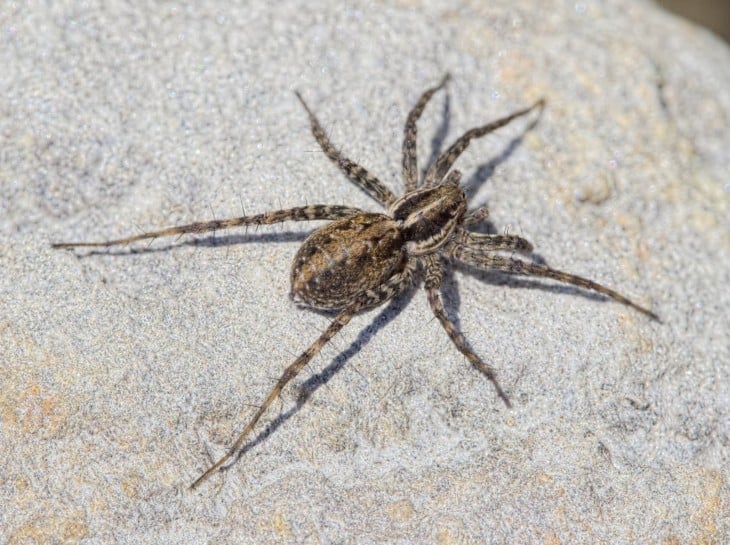
The Pardosa sp. is yet another spider that is on the small side at around 5/16 to 1 in., but that doesn’t mean it isn’t a threat. On the contrary, these spiders can be quite aggressive hunters, and prefer to actively pursue prey rather than sit and wait for them.
Female wolf spiders tend to lay their eggs in a sac, which is then attached to and carried around by their spinnerets. Once the spiderlings hatch, they climb aboard their mother’s back, enjoying a free ride (and food) until they’re large enough to fend for themselves.
These spiders are quite active and abundant in the early spring and summer months. Some species in this genus have identifying white lines running the length of their bodies, but the particular species listed here tends to be more uniformly darkly-colored.
7. Johnson Jumper
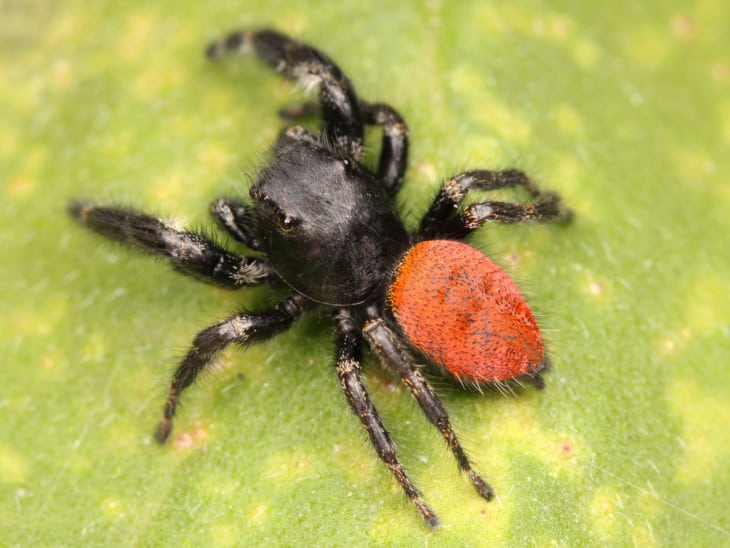
The Phidippus johnsoni (also known as the “Bold Jumper”) typically measures around 2/5 in. Their name betrays their active nature – instead of building webs and waiting, these spiders take advantage of their good vision and strong jumping ability to pounce on their prey.
Just how athletic are they? These spiders can leap more than 40x their own body height. Active as they are, they still aren’t above simply sitting in the sun and soaking up the heat while perched on walls, plants, or rocks.
In addition to their incredible jumping ability, these spiders are also readily identifiable thanks to their vivid physiognomy, most notably their bright red abdomen. Male Johnson Jumpers’ abdomens are entirely red, while females tend to have a black mark of some kind down the center.
8. Argiope – “Yellow Garden Spider”
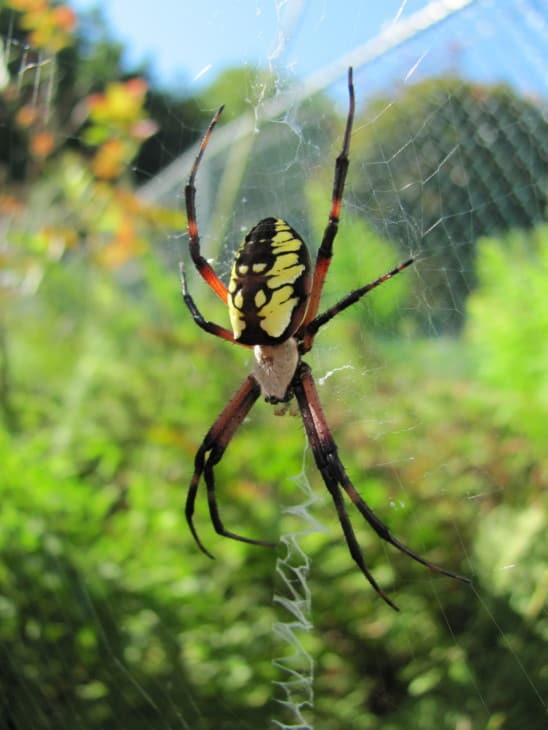
These garden spiders are relatively common, typically featuring a black and yellow coloration pattern. They are most typically found in gardens around late summer or fall and tend to measure around 1 1/10 in. once they have reached maturity.
These spiders’ long abdomens are typically where you’ll find a lot of that yellow coloration. Their webs are even more impressive, sometimes measuring as much as a foot in diameter and being marked by sophisticated patterns. Unsurprisingly, they take advantage of these great webs to wait for their prey there.
Coloration varies between males and females, with the latter typically being more striking. Females enjoy more of that aforementioned bright yellow, whereas males tend to be smaller and feature more brown and less yellow coloration.
9. Barn Spider
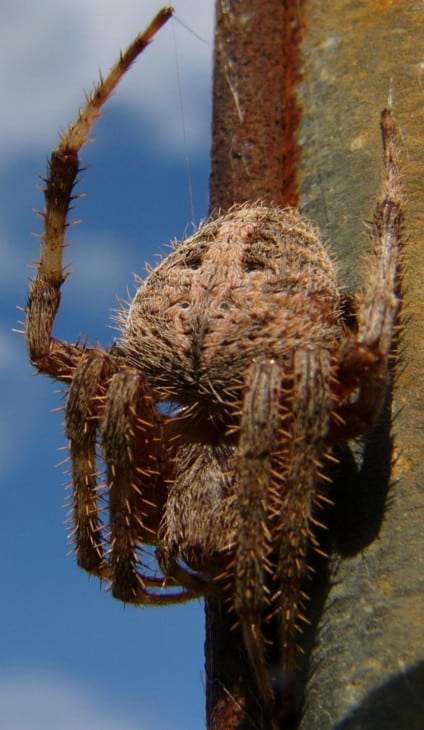
The barn spider is on the larger side for spiders on this list, measuring around 1 in. once it has reached maturity. They are another species that relies on their web-spinning abilities to eat, building their webs beneath buildings, in caves, along cliffs, and other shady areas.
One reason these spiders are so dependent on their web-building abilities is that they do not possess a good sense of sight. Instead, they rely on being able to sense the slightest tremors in their web and pouncing on flies, mosquitos, and other insects once they arrive.
These spiders are often found in areas where humans are common, so they are sometimes rumored to be poisonous. In fact, not only are barn spiders not poisonous, but you probably already know a famously-kind one – the titular arachnid heroine of E.B. White’s children’s literature classic Charlotte’s Web.
10. Filmy Dome Spider
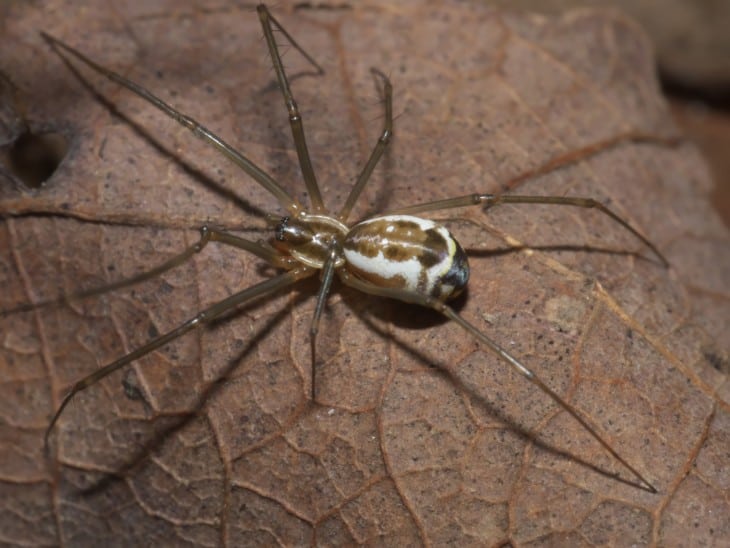
Neriene can grow to a size of roughly 3/16 to 7/16 in. and are known for their horizontal webs. These are thus yet another species of spider which, rather than go out and actively hunt for their prey, prefer to lie in wait.
When an unsuspecting insect lands on their web, they often bite it from below. Before and after this occurs, they retreat back into the margins of the web so as to better hide. These spiders build sheet webs and are active in various capacities year-round.
Both males and females tend to have longer and narrower bodies than some other garden spider species, while their bodies feature darker brown coloration. Their legs tend to be lighter and are longer than the overall size of their bodies, with males possessing palps that are quite large.

